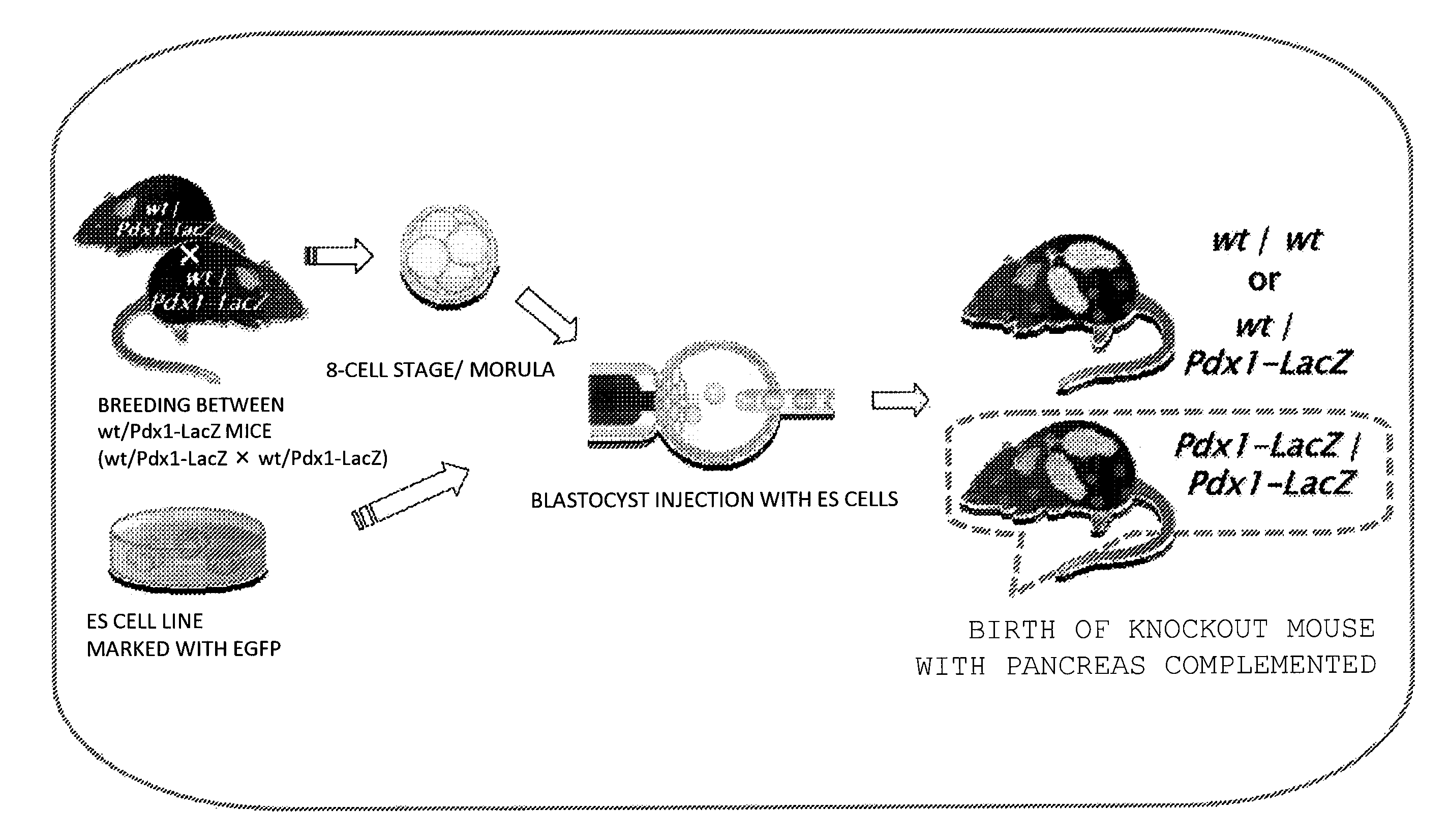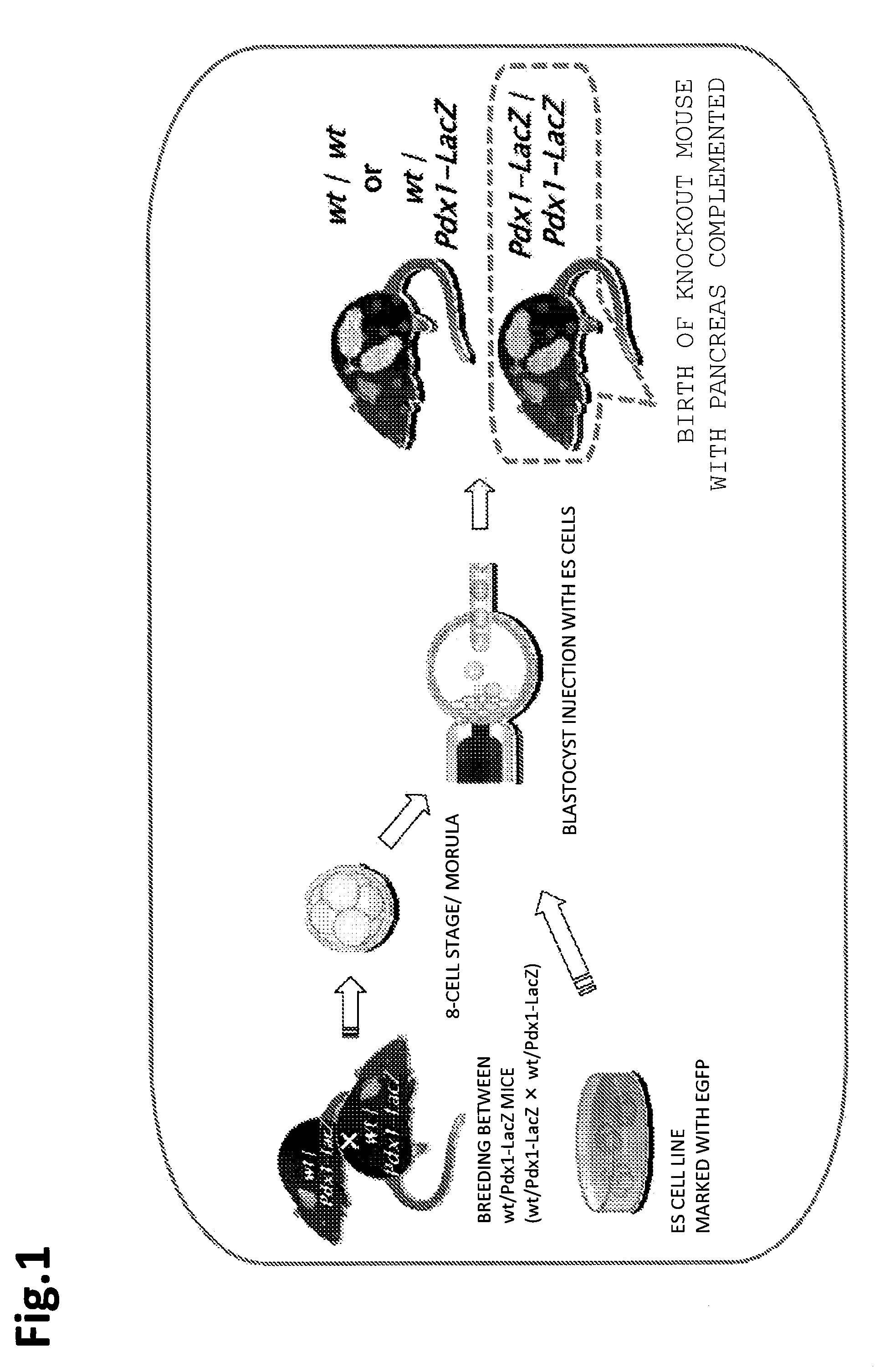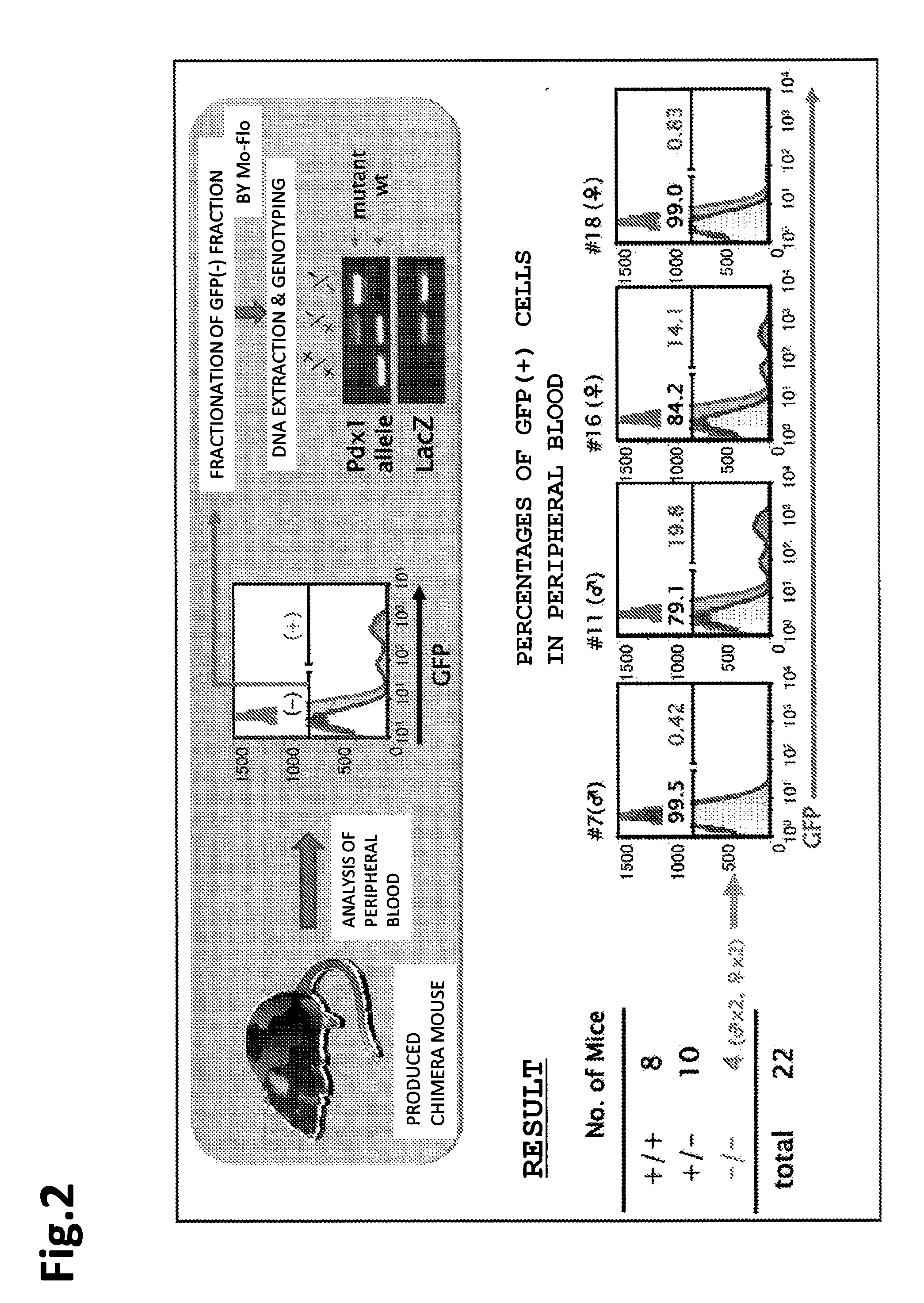Method for producing founder animal for reproducing animal having lethal phenotype caused by gene modification
a gene modification and founder animal technology, applied in the field of animal reproduction, can solve the problems of difficult induction of kidneys from es cells in vitro, difficult work, and difficult intracellular interactions, and achieve the effect of impossible induction, difficult work, and difficult differentiation into organs directed to complicated histogenesis
- Summary
- Abstract
- Description
- Claims
- Application Information
AI Technical Summary
Benefits of technology
Problems solved by technology
Method used
Image
Examples
example 1
[0137]In the present example, a mouse was selected to be a founder animal, and pancreas was selected as an organ to be defected. Further, for preparation of a knockout mouse that was characterized by pancreas deficiency, a Pdx1 gene was used.
(Mouse Used)
[0138]As a knockout mouse that was characterized by pancreas deficiency, Pdx1wt / LacZ and PdX1LacZ / LacZ (founder) were used. A blastocyst derived from a mouse in which LacZ gene had been knocked in (also knocked out) at a Pdx1 gene locus (Pdx1-LacZ knock-in mouse) was used.
(Pdx1-LacZ Knock-in Mouse)
[0139]In regard to the production of a construct, it can be produced, specifically based on the published article in Development 122, 983-995 (1996). In brief, the procedure is as follows. As for the arm of the homologous region, a product cloned from a λ clone including the Pdx1 region can be used. In the present example, an arm donated by Professor Yoshiya Kawaguchi at the Laboratory of Surgical Oncology, Kyoto University Graduate School ...
example 2
Example of Using iPS Cell
[0170]In the present example, using iPS cells instead of ES cells, an experiment similar to that in Example 1 was carried out. It should be noted that iPS cell is basically a pluripotent stem cell line and has properties very similar to those of ES cell. Therefore, the protocol performed in Example 1 can be carried out without any modification. Specifically, there is no difference in the method of culture and the method of introduction into an embryo; thus, it is understood that the present example can be carried out by using those described in Example 1.
(Example of Preparation of iPS Cell)
[0171]The inventors produced iPS cells with 3 factors (Klf4, Sox2, and Oct3 / 4) by using a fibroblast collected from a tail of a GFP transgenic mouse. The protocol used for the production is as follows. The scheme is shown in FIG. 10, and shown in detail in FIG. 11a.
(Establishment of GFP Mouse Tail-Tip Fibroblast (TTF))
[0172]Approximately 1 cm of a tail of a GFP transgenic...
example 3
Example of Using mGS Cells
[0218]In the present example, using mGS cells instead of ES cells or iPS cells, an experiment similar to that in Example 1 or 2 was carried out (refer to Mito Kanatsu-Shinohara et al., Generation of Pluripotent Stem Cells from Neonatal Mouse Testis. Cell. vol. 119, 1001-1012 (2004)). It should be noted that mGS cell is basically a pluripotent stem cell line and has properties very similar to those of ES cell or iPS cell. Therefore, the protocol performed in Example 1 or 2 can be carried out without or with modification as necessary. Specifically, there is no difference in the method of culture and the method of introduction into an embryo; thus, it is understood that the present example can be carried out by using those described in Example 1 or 2 with modification as necessary.
PUM
 Login to View More
Login to View More Abstract
Description
Claims
Application Information
 Login to View More
Login to View More - R&D
- Intellectual Property
- Life Sciences
- Materials
- Tech Scout
- Unparalleled Data Quality
- Higher Quality Content
- 60% Fewer Hallucinations
Browse by: Latest US Patents, China's latest patents, Technical Efficacy Thesaurus, Application Domain, Technology Topic, Popular Technical Reports.
© 2025 PatSnap. All rights reserved.Legal|Privacy policy|Modern Slavery Act Transparency Statement|Sitemap|About US| Contact US: help@patsnap.com



